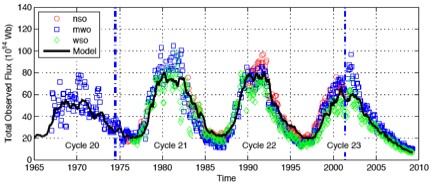
What The Science Says:
Even the CERN scientist who ran the experiment admits that it "says nothing about a possible cosmic-ray effect on clouds and climate."
Climate Myth: CERN CLOUD experiment proved cosmic rays are causing global warming
"The new [CERN] findings point to cosmic rays and the sun — not human activities — as the dominant controller of climate on Earth...CERN, and the Danes, have in all likelihood found the path to the Holy Grail of climate science" [Lawrence Solomon]
CERN scientist Jasper Kirkby, about his recent cosmic ray experiment:
"At the moment, it actually says nothing about a possible cosmic-ray effect on clouds and climate, but it's a very important first step"
At CERN, Europe's high-energy physics laboratory near Geneva, Switzerland, scientists created an experiment to test how clouds are formed. The experiment ties in with a climate "skeptic" hypothesis that cosmic rays (charged particles from space) are causing global warming. As the hypothesis goes:
Solar magnetic field gets stronger => More cosmic rays are blocked from reaching Earth => Clouds, which are hypothetically seeded by cosmic rays, are less likely to form => Fewer clouds means more sunlight reaches Earth's surface => More sunlight means warmer temperatures => global warming!
Many climate "skeptic" bloggers and commenters have claimed that the CERN experiment has proven that cosmic rays are causing global warming, and that the experiment is "the final nail in the man-made global warming coffin" (i.e. here and here and here and here).
In reality, the CERN experiment only tests the bolded step in this list of requirements for cosmic rays to be causing global warming:
In short, the CERN experiment only tested one-third of one out of four requirements to blame global warming on cosmic rays. Additionally scientists have measured solar activity and the number of cosmic rays reaching Earth, and neither meets the first two requirements listed above. Both solar magentic field strength and the number of cosmic rays reaching Earth have been flat over the past 50+ years (Figure 1).

Figure 1: Solar Magnetic Field Strength from 1967 to 2009 Vieira & Solanki (2010)
A number of other recent studies have also found that cosmic rays have minimal influence on cloud formation, and thus minimal influence on global warming.
As Dr. Kirby said in the quote above, it is an important first step, just like buying eggs is an important first step in baking a soufflé. But just having some eggs doesn't mean I can bake a successful soufflé. There are a whole lot of other requirements necessary for me to bake a soufflé, and believe me, I don't meet them!
 |
The Skeptical Science website by Skeptical Science is licensed under a Creative Commons Attribution 3.0 Unported License. |